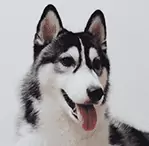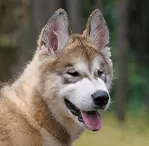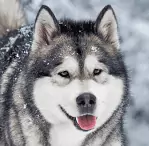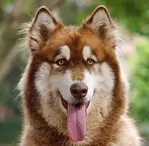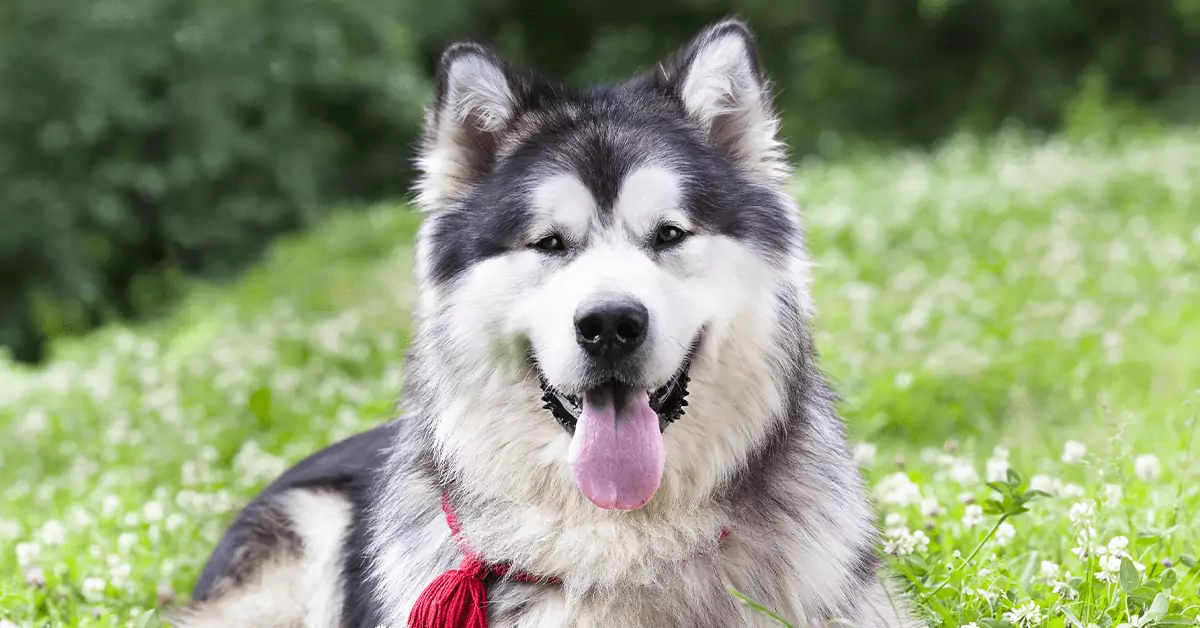
Meet the Alaskan Malamute
Top Working Dog
Best Fur Friend
Cold-Weather Canine
My Many Looks
My Breed Characteristics
Furbulous Fact
As I Grow Up
History of My Breed
Care Tips
Training Tips
Personality
Friendly
Loving
Playful
Group
Working
Origin
Alaska, United States
Life Span
10-14 Years
Breed Popularity
#65 of 195
Height Range
23-25 Inches
Weight Range
75-85 Pounds
Coat Details
Type
Medium-length and Dense
Texture
Coarse Top Coat and Wooly Undercoat
Features
Double Coat, Cold-Weather Resistant
Colors
Agouti & White, Black & White, Blue & White, Gray & White, Red &
Hypoallergenic
Cost to Buy
$500-$2,500
Lifetime Care Cost
$24,625
My Many Looks
My Breed Characteristics
Furbulous Fact
As I Grow Up
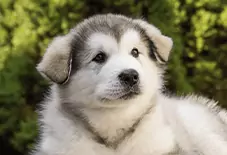
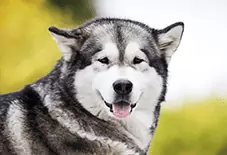
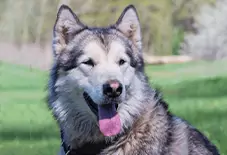
History of My Breed
Care Tips
from Dr. Jessica Greenberg, Associate VeterinarianBrush your Alaskan Malamute’s teeth regularly.
Alaskan Malamutes are especially prone to dental disease, meaning you should brush their teeth at least 3 times a week. Be sure to choose a vet-approved dog toothpaste to brush your Mal’s teeth, as well as a canine toothbrush that your pup is comfortable with. You can use a standard dog toothbrush, or even a finger dog toothbrush.
Be proactive about your Mal’s joint health.
Alaskan Malamutes are prone to arthritis due to their large stature, meaning they benefit from the use of daily joint supplements. You should speak to your veterinarian about starting joint supplements from 1 year of age, as this can promote overall bone health and slow the deterioration of their joints.
Get regular X-rays to monitor for hip dysplasia.
Unfortunately, hip dysplasia is common in Alaskan Malamutes. In order to stay on top of this potential danger, you should have your veterinarian perform regular diagnostic X-rays to keep track of any joint changes. Many veterinarians recommend performing yearly X-rays on at risk breeds.
Training Tips
from Dr. Jessica Greenberg, Associate VeterinarianTiming is key to a positive training experience.
Training can be hard on an Alaskan Malamute, so it's important to make sure they do not have a bad experience. Remove all negative factors to prevent your pup from becoming distracted and be in the best shape for learning. Don't train your Alaskan Malamute right before mealtimes since they may be uncooperative when only thinking of eating. Also, don't wake your Alaskan Malamute up from a nap to train them. Wait until they are wide awake and ready to go.
Positive reinforcement is key to effective training.
Always use rewards and positive reinforcement when your Malamute responds correctly to a command. Thanks to their high intelligence, Malamutes quickly associate their good behavior with getting a treat or reward. Food-based rewards or treats are the best way to keep your Malamute motivated since they are very food orientated. Due to their sociable nature, Malamutes are happy to do what the humans in their pack want. After they make that connection with your positivity and their behavior, they are very unlikely to disobey or act up.
Keep training sessions short for maximum productivity.
You will need a lot of patience at the beginning of your Mal’s training sessions. Keep them short and frequent. 10-minute sessions are perfect for training and you can usually do 5-6 a day. This allows your pup to maintain focus and keeps your training sessions meaningful. Frequent training sessions allow you to be repetitive with your training. They remind your pup of their good behavior and the commands they are learning through the day. Frequent reinforcement also allows them to learn faster. If your pup is struggling with one specific command, there are several times each day that they can retry it while it's still fresh in their mind.
My Many Looks
My Breed Characteristics
Furbulous Fact
As I Grow Up
History of My Breed
Care Tips
Training Tips
-
Personality
Friendly
Loving
Playful
-
Group
Working
-
Origin
Alaska, United States
-
Life Span
10-14 Years
-
Breed Popularity
#65 of 195
-
Height Range
23-25 Inches
-
Weight Range
75-85 Pounds
-
动物皮毛
Type
Medium-length and Dense
Texture
Coarse Top Coat and Wooly Undercoat
Features
Double Coat, Cold-Weather Resistant
Colors
Agouti & White, Black & White, Blue & White, Gray & White, Red &
-
Hypoallergenic
-
Cost to Buy
$500-$2,500
-
Lifetime Care Cost
$24,625
